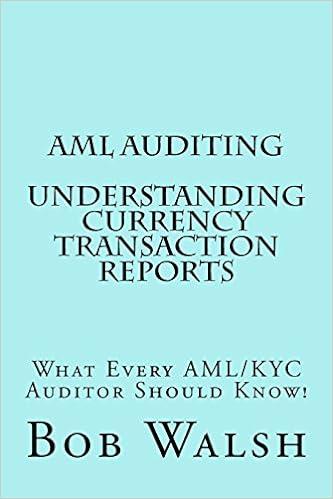Question
Mar 1 Beginning inventory . . . 10 units @ $160 = $1,600 15 Purchase . . . . . . . . . .
| Mar 1 | Beginning inventory . . . | 10 | units @ | $160 | = | $1,600 |
| 15 | Purchase . . . . . . . . . . . . | 5 | units @ | 161 | = | $805 |
| 26 | Purchase . . . . . . . . . . . . | 14 | units @ | 170 | = | $2,380 |
Big Fish comma Inc.Big Fish, Inc.?'s
inventory records for a particular development program show the following at
MarchMarch
?31:
At
MarchMarch
?31,
1111
of these programs are on hand.
Requirements
| 1. | Compute cost of goods sold and ending? inventory, using each of the following? methods: | |
| a. | Specific unit? cost, with sevenseven $ 160$160 units andfourfour $ 170$170 units still on hand at the end | |
| b. | Average cost | |
| c. | ?First-in, first-out | |
| d. | ?Last-in, first-out | |
| 2. | Which method produces the highest cost of goods? sold? Which method produces the lowest cost of goods? sold? What causes the difference in cost of goods? sold?
1. Compute cost of goods sold and ending? inventory, using each of the following four inventory? methods: Begin by entering the number of units sold and number of units in ending inventory. Then calculate cost of goods sold and ending inventory using? (a) specific unit? cost, then? (b) average? cost, then? (c) FIFO, and finally? (d) LIFO. ?(Round the average cost per unit to the nearest cent. Round all final answers to the nearest whole? dollar.)
| |
Step by Step Solution
There are 3 Steps involved in it
Step: 1

Get Instant Access to Expert-Tailored Solutions
See step-by-step solutions with expert insights and AI powered tools for academic success
Step: 2

Step: 3

Ace Your Homework with AI
Get the answers you need in no time with our AI-driven, step-by-step assistance
Get Started


